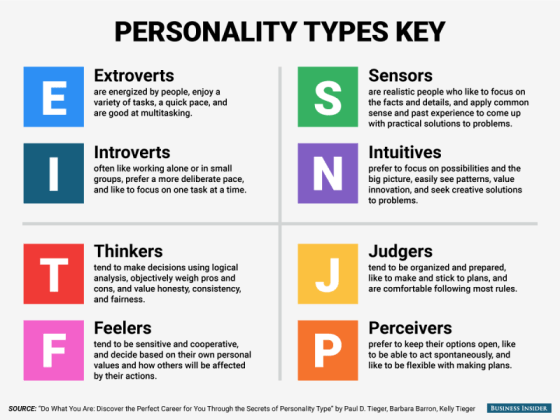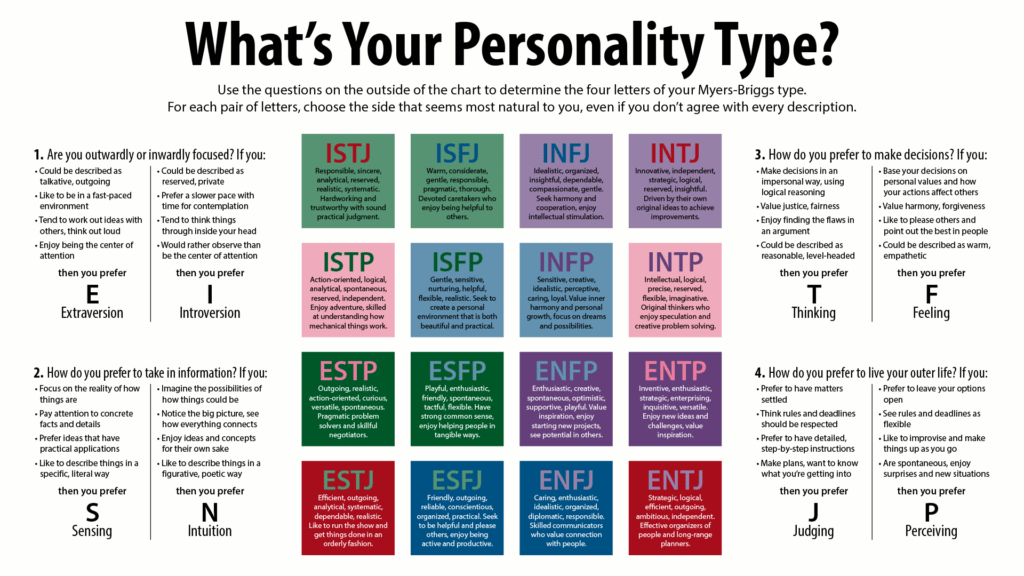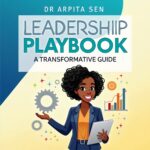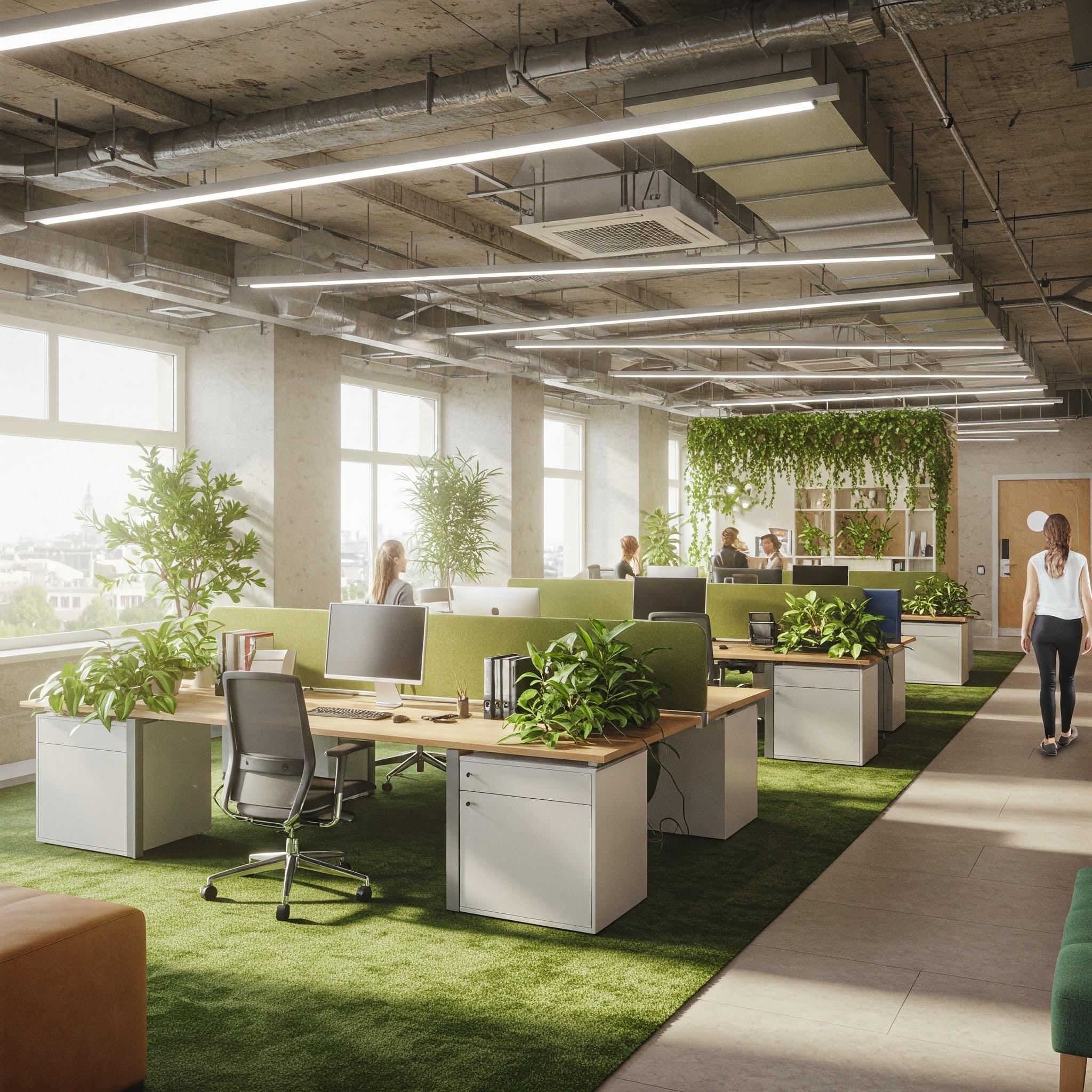The workplace is a dynamic environment where individuals with diverse personalities come together to achieve common goals. Understanding and managing these diverse personalities is crucial for effective teamwork and organizational success. The Myers-Briggs Type Indicator (MBTI) is a widely used psychological tool that provides insights into individual differences, making it a valuable resource for Human Resources (HR) professionals. This article explores the MBTI and discusses its usefulness in the field of HR.
What is MBTI?
The Myers-Briggs Type Indicator is a psychological assessment tool based on Carl Jung’s theory of psychological types. It stands as a beacon in the realm of personality assessments, offering profound insights into the intricacies of human behavior and preferences. Originating from the visionary minds of Katharine Cook Briggs and her daughter Isabel Briggs Myers in the early to mid-20th century, the MBTI has become a cornerstone in understanding the diverse tapestry of personalities that weave through our personal and professional lives.
The seeds of the MBTI were sown during a period when the exploration of individual differences and the quest to unlock the mysteries of human personality captivated the imagination of psychologists. Drawing inspiration from the pioneering work of Swiss psychiatrist Carl Jung, Katharine Briggs and Isabel Myers embarked on a journey to develop a practical tool that could distill complex psychological concepts into an accessible and applicable framework.
In the 1920s, Briggs began studying Jung’s theories on personality types and psychological preferences. Her fascination with the subject deepened, leading her to develop a questionnaire designed to categorize individuals into distinct personality types based on their natural inclinations. This early work laid the foundation for what would later evolve into the MBTI—a comprehensive and widely used tool for delineating the diverse ways in which individuals approach the world, make decisions, and interact with others.
The collaborative efforts of Briggs and Myers, spanning several decades, culminated in the official release of the MBTI in its earliest form in the 1940s. Since then, it has undergone refinements and adaptations, becoming a global phenomenon embraced by individuals, organizations, and psychologists alike. The enduring popularity of the MBTI can be attributed to its practicality, accessibility, and capacity to provide individuals with valuable insights into their own personalities and the personalities of those around them.
Structure of the MBTI Questionnaire:
The MBTI categorizes individuals into sixteen personality types based on their preferences in four dichotomies:

- Extraversion (E) vs. Introversion (I):
- Questions assess whether individuals prefer to focus their energy outwardly (E) by interacting with people and the external environment or inwardly (I) by reflecting on thoughts and ideas.
- Sensing (S) vs. Intuition (N):
- This dichotomy explores how individuals prefer to take in information. Sensing (S) individuals rely on concrete and factual information, while Intuition (N) individuals prefer abstract and imaginative information.
- Thinking (T) vs. Feeling (F):
- Questions in this category gauge how individuals prefer to make decisions. Thinking (T) individuals prioritize logic and consistency, while Feeling (F) individuals consider the impact on people and special circumstances.
- Judging (J) vs. Perceiving (P):
- This dichotomy assesses how individuals prefer to deal with the outside world. Judging (J) individuals prefer planned and organized approaches, while Perceiving (P) individuals prefer spontaneous and flexible approaches.
How Does MBTI Work?
Individuals take a questionnaire that assesses their preferences in each of the four dichotomies, resulting in a four-letter personality type (e.g., ISTJ or ENFP). This type is a representation of an individual’s natural tendencies, providing insights into their preferred working styles, communication preferences, decision-making processes, and more.
Administration and Scoring:
- The MBTI questionnaire typically consists of around 93 questions, and individuals are asked to choose between two options for each question.
- There is no time limit for completing the questionnaire, and respondents are encouraged to answer quickly and instinctively.
- After completing the questionnaire, individuals are assigned a four-letter personality type based on their preferences in the four dichotomies.
- The scoring process yields a combination of one preference from each dichotomy, resulting in one of the sixteen possible personality types.
Interpretation of MBTI Results:
- Extraversion (E) vs. Introversion (I):
- Individuals who prefer Extraversion (E) are sociable, outgoing, and energized by interaction. Introverts (I) are reflective, reserved, and recharge by spending time alone.
- Sensing (S) vs. Intuition (N):
- Sensing (S) individuals are practical, detail-oriented, and focused on the present. Intuitives (N) are imaginative, future-focused, and interested in possibilities.
- Thinking (T) vs. Feeling (F):
- Thinkers (T) value objectivity, logic, and consistency in decision-making. Feelers (F) prioritize empathy, harmony, and consideration of personal values.
- Judging (J) vs. Perceiving (P):
- Judgers (J) prefer structure, organization, and planning. Perceivers (P) value flexibility, adaptability, and spontaneity.
Strengths and Criticisms of MBTI:
Strengths:
- Provides a framework for understanding and appreciating individual differences.
- Facilitates communication and collaboration by highlighting diverse preferences.
- Offers insights into potential career paths and work styles.
Criticisms:
- Binary nature of dichotomies oversimplifies complex personality traits.
- Results may be influenced by mood, context, or self-perception.
- Limited predictive validity and reliability in certain contexts.
The 16 MBTI personalities:
- ISTJ – The Inspector (Introverted, Sensing, Thinking, Judging):
- ISTJs are meticulous and responsible individuals who excel in tasks that demand attention to detail. With a strong sense of duty, they prefer structured environments and adhere to established rules. ISTJs are often found in roles where precision and reliability are paramount, such as project management or quality control.
- ISFJ – The Protector (Introverted, Sensing, Feeling, Judging):
- ISFJs are warm and nurturing individuals who prioritize harmony and the well-being of others. They excel in roles that involve caregiving and support, making them effective team players. ISFJs are often found in professions such as nursing, counseling, or education.
- INFJ – The Counselor (Introverted, Intuitive, Feeling, Judging):
- INFJs are insightful and compassionate visionaries, driven by a deep understanding of human emotions. They often pursue careers where they can make a positive impact, such as counseling, psychology, or social work. INFJs are known for their ability to inspire and guide others.
- INTJ – The Mastermind (Introverted, Intuitive, Thinking, Judging):
- INTJs are strategic and analytical thinkers with a penchant for long-term planning. They excel in roles that require innovation, problem-solving, and a systematic approach to achieving goals. INTJs often gravitate towards leadership positions where they can implement their visionary ideas.
- ISTP – The Craftsman (Introverted, Sensing, Thinking, Perceiving):
- ISTPs are adaptable and hands-on individuals who thrive in dynamic environments. They excel in roles that involve troubleshooting and practical problem-solving, such as engineering or technology. ISTPs enjoy exploring the mechanics of how things work.
- ISFP – The Composer (Introverted, Sensing, Feeling, Perceiving):
- ISFPs are artistic and sensitive individuals who appreciate aesthetics and creativity. They often find fulfillment in roles that allow them to express themselves through art, design, or other forms of self-expression. ISFPs value authenticity and enjoy creating beauty in the world.
- INFP – The Healer (Introverted, Intuitive, Feeling, Perceiving):
- INFPs are idealistic and compassionate individuals with a strong sense of purpose. They often pursue careers that align with their values and enable them to make a positive impact on society. INFPs are creative thinkers who seek authenticity in their personal and professional lives.
- INTP – The Architect (Introverted, Intuitive, Thinking, Perceiving):
- INTPs are analytical and inventive thinkers who enjoy exploring theoretical concepts. They thrive in roles that allow them to delve into complex problems, formulate innovative solutions, and contribute to intellectual pursuits. INTPs value autonomy and intellectual freedom.
- ESTP – The Dynamo (Extraverted, Sensing, Thinking, Perceiving):
- Energetic and action-oriented, ESTPs thrive in dynamic environments that require quick thinking and adaptability. They often excel in roles that involve risk-taking and hands-on problem-solving, such as entrepreneurship, sales, or emergency services.
- ESFP – The Performer (Extraverted, Sensing, Feeling, Perceiving):
- ESFPs are spontaneous and outgoing individuals who enjoy engaging with others. They often excel in roles that allow them to showcase their creativity, enthusiasm, and people skills. ESFPs thrive in environments that embrace variety and social interaction.
- ENFP – The Champion (Extraverted, Intuitive, Feeling, Perceiving):
- ENFPs are enthusiastic and imaginative individuals who thrive in dynamic and creative environments. They are often drawn to roles that involve brainstorming, innovation, and collaboration. ENFPs seek meaning in their work and enjoy exploring possibilities.
- ENTP – The Visionary (Extraverted, Intuitive, Thinking, Perceiving):
- Charismatic and innovative, ENTPs are strategic thinkers with a natural inclination towards problem-solving. They excel in roles that require adaptability, creativity, and the ability to generate new ideas. ENTPs are often found in leadership positions where they can drive change.
- ESTJ – The Supervisor (Extraverted, Sensing, Thinking, Judging):
- Known for their strong organizational skills and leadership abilities, ESTJs excel in roles that demand efficiency, structure, and adherence to established procedures. They are often found in management positions where they can implement and optimize processes.
- ESFJ – The Provider (Extraverted, Sensing, Feeling, Judging):
- ESFJs are sociable and caring individuals who thrive in roles that involve building and nurturing relationships. They are effective team players who often find fulfillment in positions that allow them to support and connect with others, such as human resources or healthcare.
- ENFJ – The Teacher (Extraverted, Intuitive, Feeling, Judging):
- ENFJs are charismatic and empathetic individuals who excel in roles that involve mentorship, leadership, and creating positive social change. They are often drawn to careers where they can inspire and guide others, such as teaching, coaching, or counseling.
- ENTJ – The Commander (Extraverted, Intuitive, Thinking, Judging):
- Natural leaders and strategic thinkers, ENTJs excel in roles that require decision-making, planning, and organizational leadership. They are often found in executive positions where they can implement their vision and drive results. ENTJs are driven by a desire for efficiency and achievement.

Usefulness of MBTI in HR:
- Team Building:
- Understanding team members’ personality types can help HR professionals build well-balanced teams. Different personality types bring unique strengths to the table, and a diverse team can enhance creativity and problem-solving.
- Communication:
- MBTI helps in improving communication within the organization. By recognizing and respecting different communication styles, HR can facilitate better collaboration and reduce misunderstandings.
- Conflict Resolution:
- Identifying personality differences can be instrumental in resolving conflicts. HR can use MBTI insights to mediate conflicts, fostering a more harmonious work environment.
- Leadership Development:
- HR can leverage MBTI to identify and nurture leadership potential within the organization. Understanding the leadership styles associated with different personality types allows for targeted development programs.
- Employee Engagement:
- Recognizing and appreciating employees’ diverse preferences contributes to higher job satisfaction and engagement. HR can tailor engagement strategies to align with individuals’ preferences for tasks, work environment, and career development.
- Career Development:
- MBTI can be used to guide employees in their career development by helping them understand their strengths, preferences, and potential areas for growth. This, in turn, contributes to better career satisfaction and retention.
- Training and Development:
- HR professionals can design training programs that cater to different learning styles identified through MBTI. This personalized approach enhances the effectiveness of training initiatives.
- Recruitment and Hiring:
- MBTI insights can be integrated into the recruitment process to ensure a good fit between candidates and organizational culture. Matching personality types to job roles can lead to better job satisfaction and performance.
Application of 16 personality types in career counselling and leadership style determination:
. ISTJ – The Inspector:
Job Roles:
- Accountant
- Project Manager
- Quality Control Specialist
Leadership Style:
- Detail-oriented and organized.
- Prefers a structured and systematic approach.
- Values efficiency and adherence to rules.
Advantages:
- Reliable and responsible.
- Strong organizational skills.
- Consistent and thorough in tasks.
Challenges:
- May be resistant to change.
- Tendency to be critical of deviations from established procedures.
2. ISFJ – The Protector:
Job Roles:
- Nurse
- Teacher
- Human Resources Specialist
Leadership Style:
- Nurturing and supportive.
- Values harmony and cooperation.
- Encourages a team-oriented approach.
Advantages:
- Compassionate and empathetic.
- Excellent at fostering positive relationships.
- Attentive to the needs of others.
Challenges:
- May avoid conflict to maintain harmony.
- Struggles with delegation and prioritizing own needs.
3. INFJ – The Counselor:
Job Roles:
- Counselor
- Social Worker
- Nonprofit Leader
Leadership Style:
- Visionary and inspirational.
- Values authenticity and personal growth.
- Seeks to make a positive impact on individuals and society.
Advantages:
- Insightful and creative.
- Connects well with others on a deeper level.
- Values long-term, meaningful goals.
Challenges:
- May experience frustration in ambiguous situations.
- Tendency to be perfectionistic.
4. INTJ – The Mastermind:
Job Roles:
- Strategist
- Scientist
- CEO
Leadership Style:
- Strategic and analytical.
- Values innovation and efficiency.
- Sets long-term goals and plans.
Advantages:
- Visionary and forward-thinking.
- Independent and confident decision-maker.
- Systematic problem-solver.
Challenges:
- May appear distant or aloof.
- May struggle with delegation.
5. ISTP – The Craftsman:
Job Roles:
- Engineer
- Pilot
- IT Specialist
Leadership Style:
- Adaptable and hands-on.
- Values practical problem-solving.
- Prefers flexibility and autonomy.
Advantages:
- Skilled troubleshooter.
- Excellent in crisis situations.
- Enjoys exploring and understanding how things work.
Challenges:
- May resist routine or repetitive tasks.
- Tendency to avoid long-term planning.
6. ISFP – The Composer:
Job Roles:
- Artist
- Graphic Designer
- Counselor
Leadership Style:
- Creative and individualistic.
- Values aesthetics and personal expression.
- Encourages collaboration and open communication.
Advantages:
- Artistic and sensitive.
- Adaptable and spontaneous.
- Values authenticity and harmony.
Challenges:
- May avoid conflict at the expense of personal needs.
- Tendency to be reserved or private.
7. INFP – The Healer:
Job Roles:
- Writer
- Social Worker
- Psychologist
Leadership Style:
- Idealistic and compassionate.
- Values personal growth and authenticity.
- Inspires others to pursue meaningful goals.
Advantages:
- Empathetic and insightful.
- Creative and innovative.
- Values individuality and authenticity.
Challenges:
- Struggles with criticism.
- Tendency to be overly self-critical.
8. INTP – The Architect:
Job Roles:
- Scientist
- Researcher
- Software Developer
Leadership Style:
- Analytical and innovative.
- Values intellectual freedom and exploration.
- Prefers an open and flexible approach.
Advantages:
- Logical and objective thinker.
- Enjoys exploring theoretical concepts.
- Adaptable problem-solver.
Challenges:
- May appear detached or reserved.
- Tendency to overanalyze.
9. ESTP – The Dynamo:
Job Roles:
- Entrepreneur
- Salesperson
- Emergency Services
Leadership Style:
- Energetic and action-oriented.
- Values practical problem-solving.
- Thrives in dynamic and fast-paced environments.
Advantages:
- Adaptable and quick-thinking.
- Skilled at troubleshooting.
- Confident decision-maker.
Challenges:
- May struggle with long-term planning.
- Tendency to take risks without full consideration.
10. ESFP – The Performer:
Job Roles:
- Actor
- Event Planner
- Sales Representative
Leadership Style:
- Enthusiastic and people-oriented.
- Values creativity and collaboration.
- Inspires others through enthusiasm.
Advantages:
- Sociable and adaptable.
- Excellent at building relationships.
- Values enjoying the present moment.
Challenges:
- May avoid conflict to maintain positivity.
- Tendency to procrastinate on planning.
11. ENFP – The Champion:
Job Roles:
- Journalist
- Marketing Specialist
- Teacher
Leadership Style:
- Enthusiastic and imaginative.
- Values innovation and collaboration.
- Inspires and motivates others toward a common vision.
Advantages:
- Creative and adaptable.
- Values authenticity and personal growth.
- Excellent at generating new ideas.
Challenges:
- May struggle with follow-through.
- Tendency to become overwhelmed with possibilities.
12. ENTP – The Visionary:
Job Roles:
- Innovator
- Consultant
- Entrepreneur
Leadership Style:
- Charismatic and strategic.
- Values adaptability and innovation.
- Challenges the status quo and encourages creativity.
Advantages:
- Forward-thinking and analytical.
- Generates innovative solutions.
- Skilled at strategic planning.
Challenges:
- May appear overly critical.
- Tendency to be impatient with inefficiency.
13. ESTJ – The Supervisor:
Job Roles:
- Manager
- Military Officer
- Financial Planner
Leadership Style:
- Organized and assertive.
- Values efficiency and structure.
- Sets clear expectations and follows established procedures.
Advantages:
- Strong organizational and leadership skills.
- Reliable and consistent.
- Values accountability and responsibility.
Challenges:
- May resist change.
- Tendency to be perceived as too directive.
14. ESFJ – The Provider:
Job Roles:
- Teacher
- Human Resources Manager
- Event Coordinator
Leadership Style:
- Nurturing and sociable.
- Values harmony and cooperation.
- Creates a positive and supportive team environment.
Advantages:
- Compassionate and empathetic.
- Excellent at building relationships.
- Values teamwork and collaboration.
Challenges:
- May avoid conflict to maintain harmony.
- Tendency to prioritize others’ needs over personal needs.
15. ENFJ – The Teacher:
Job Roles:
- Counselor
- Nonprofit Leader
- Manager
Leadership Style:
- Charismatic and empathetic.
- Values personal growth and collaboration.
- Inspires and motivates others toward shared goals.
Advantages:
- Insightful and inspirational.
- Connects well with others emotionally.
- Values positive social change.
Challenges:
- May struggle with setting boundaries.
- Tendency to take on too much responsibility.
16. ENTJ – The Commander:
Job Roles:
- CEO
- Strategist
- Military Leader
Leadership Style:
- Strategic and assertive.
- Values efficiency and results.
- Sets ambitious goals and leads with authority.
Advantages:
- Visionary and decisive.
- Strong organizational and leadership skills.
- Values strategic planning and execution.
Challenges:
- May appear too directive.
- Tendency to be perceived as too focused on results.
It’s important to note that these descriptions are generalizations, and individuals may exhibit a range of behaviors and preferences beyond their identified type. Additionally, the most successful individuals often develop skills that may not align perfectly with their innate preferences. The MBTI is a valuable tool for self-awareness and understanding others, but it should be used in conjunction with other assessments and considerations for a more comprehensive understanding of individual and team dynamics.
Expanding MBTI Beyond HR:
The versatility of MBTI extends well beyond the realms of Human Resources, influencing personal development, relationships, education, and leadership across various sectors. Real-world examples from companies like IBM, Google, Procter & Gamble, and the Mayo Clinic illustrate the practical applications of MBTI in enhancing organizational dynamics, employee satisfaction, and overall success.
- Personal Development:
- Beyond the confines of the workplace, individuals can use MBTI for personal development. Understanding one’s personality type can provide insights into preferred learning styles, decision-making processes, and areas for growth. This self-awareness can guide personal and professional development efforts.
- Relationships:
- MBTI is widely used in relationship counseling and personal coaching. Couples and individuals seeking to improve their interpersonal dynamics can use MBTI to comprehend communication styles, conflict resolution approaches, and emotional needs.
- Education:
- In educational settings, teachers and students can benefit from MBTI insights. Educators can tailor their teaching methods to accommodate diverse learning styles, while students can gain a better understanding of their study habits and collaboration preferences.
- Leadership Training:
- Leadership development programs often incorporate MBTI to help aspiring leaders understand their leadership styles and how to adapt to the needs of their teams. This application goes beyond HR and directly influences organizational leadership and strategy.
- Team Building in Non-Corporate Settings:
- MBTI is not exclusive to corporate environments. Non-profit organizations, sports teams, and community groups use MBTI to build cohesive and effective teams. Understanding individual strengths and preferences enhances collaboration and group dynamics in various settings.
Real-World Examples:
- IBM:
- IBM, a multinational technology and consulting company, has integrated MBTI into its leadership development programs. By identifying the personality types of its leaders, IBM tailors training and coaching to enhance leadership effectiveness and promote a positive organizational culture.
- Google:
- Google, known for its innovative work culture, has employed MBTI in team-building exercises. By understanding the diverse personalities within teams, Google aims to foster creativity and collaboration, contributing to the success of projects such as Android and Google Maps.
- Procter & Gamble (P&G):
- P&G, a consumer goods company, utilizes MBTI in its recruitment process. By considering personality types when hiring, P&G seeks to ensure that candidates align with the company’s culture and values, resulting in better job satisfaction and long-term employee engagement.
- The Mayo Clinic:
- In the healthcare sector, the Mayo Clinic has incorporated MBTI into its employee development initiatives. By understanding the diverse personalities within healthcare teams, the clinic aims to improve communication, reduce workplace stress, and enhance overall patient care.
- University of Florida:
- Academic institutions, such as the University of Florida, have integrated MBTI into student services. The university uses MBTI to assist students in career planning, helping them make informed decisions about majors and future career paths based on their personality preferences.
Conclusion:
Despite its limitations, the Myers-Briggs Type Indicator remains a valuable tool for HR professionals seeking to understand and manage individual differences in the workplace. When used responsibly and in conjunction with other assessment tools, MBTI can contribute to improved team dynamics, communication, and overall organizational success. As with any psychological tool, it is essential for HR professionals to interpret MBTI results with caution and consider them as one of many factors influencing individual behavior in the workplace.











